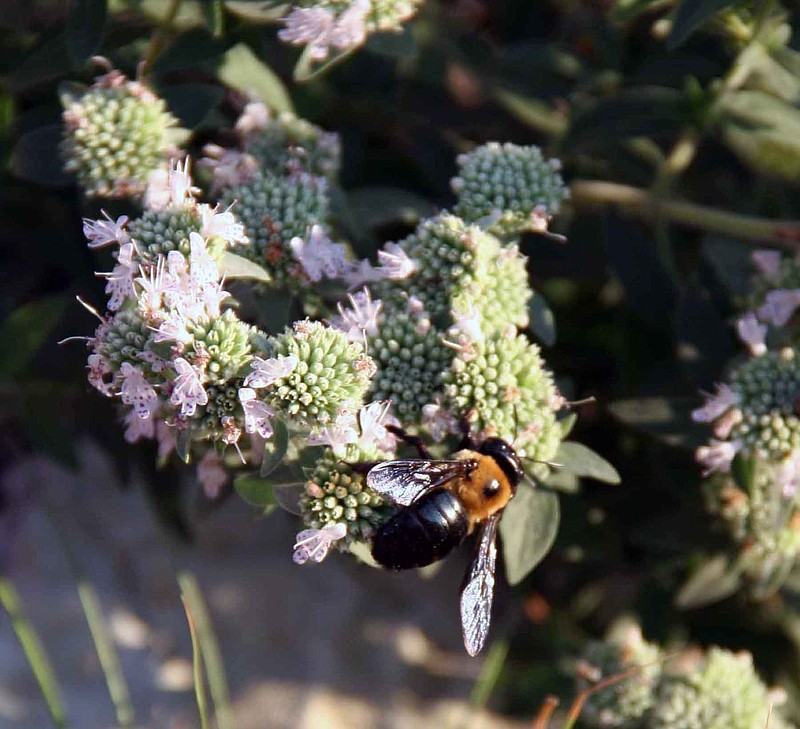Happy New Year to all! I hope 2018 is a year full of native plant adventures. I also hope you have enjoyed this column so far and tried some of the recipes shared here.
In Missouri, one can find a variety of native plants that can be consumed as greens, teas, in stews or for flavoring, the way American Indians did before the arrival of the Europeans. Settlers adopted many of them in their diet, and these foods continued to be used commonly until recently in our history. Many of these plants are mentioned in native edibles books, but usually only a few of them are still consumed regularly.
In this column, since January 2015, 20 species have been discussed, including some well-known like gooseberries, pecans, black raspberries, sassafras, persimmon and elderberry and others not so familiar like dittany, goldenglow, groundnut and wild ginger.
A very few domesticated popular native species include sunflower, pecans and black walnut, and northern species like cranberries and wild rice. In Missouri and across the country, there is little awareness about native perennials that can be consumed as greens and are available in abundance. These include nettles, cup plant and goldenglow among others, and they are more common than we may think. One of the purposes of this column is to increase appreciation for native edible plants and introduce them in our daily lives.
Several books have been written about native edible plants in Missouri and across the country. Among them is Jan Phillips who wrote the award-winning book "Wild Edibles of Missouri," published in 1979. In 2011, "Cooking Wild in Missouri," written by Bernadette Dryden presented 100 kitchen tested recipes including salads, appetizers, savory stews, entrees and desserts. Both books were published by the Missouri Department of Conservation. Both are still available, the first one: only online and the latter as a hard copy.
Everywhere around Missouri, regular residents, educators, grassroots and nonprofit organizations, agencies and academic institutions are helping to increase appreciation of readily available native edible plants in Missouri.
There are many reasons to grow and consume native edible plants. I include information of the benefits for pollinators, butterflies and other wildlife so one can adopt those that offer most rewards. Because of their diversity, some grow better in dry conditions and some prefer wet habitats. Some tolerate shade and others grow better under full sun. Most of them have a wide range of adaptation, and in unpredictable weather, native plants can be very hardy.
Edible shrubs and herbaceous plants can be established in gardens, hedgerows or windbreaks in urban or rural lands. A combination of plants common in Missouri and adapted to wide range of soils include elderberry, wild plum, bee balm, slender and hairy mountain mint and, as ground covers, common blue violet and poppy mallow (Sambucus canadensis, Prunus americana, Monarda fistulosa, Pycnanthemum tenuifolius, P. pilosum, Viola sororia and V. papilionaceae and Calirhoe involucrata, respectively), as follows. Most have already been discussed in this column; others will be discussed in 2018.
Woody plants
Leadplant (Amorpha canescens) is a multi-branched shrub is much shorter, and can reach up to 3 feet tall. It is a good plant for urban gardens due to its compact size, beauty and love for sunny and dry sites. The leaves can be used to prepare a hot or cold tea. Native bees visit the flowers of this shrub. This one will be discussed in 2018.
Smooth sumac (Rhus glabra) and winged sumac (R. glabra) are two shrubs that form thickets. The bright red berries should be harvested immediately after ripening in the fall and can be used to prepare 'sumacade,' a refreshing drink, syrups or jams. To be safe, all edible sumacs have red berries.
Spicebush (Lindera benzoin) is a small tree that has small yellow flowers that bloom in early spring. Leaves are aromatic and can be used to prepare tea and ripe berries can be used for flavoring. Nectar and pollen attract honeybees and native bees. It is the host for the spicebush swallowtail butterfly caterpillar.
Wild plum (Prunus americana) is a thicket forming shrub or small tree. The bright red fruits mature in late summer and are used to make jellies and marmalades. The flavor is excellent.
Wildflowers
Bee balm (Monarda fistulosa) is another member of the mint family that blooms from June to September and can reach up to 5 feet in height. Leaves and flowers are very fragrant and can be used for tea and to scent soaps. It establishes well in poor soil in dry to moist conditions. Butterflies love them.
Common blue violets (Viola sororia and V. papilionaceae) grow better in shady and moist sites. The flowers and leaves are edible. Flowers are used by bakeries to decorate cakes and prepare other deserts. Candied crystalized violets sell for $8 to $18 dollars per ounce. Fritillary butterfly depend on leaves of violets for their young to grow.
Cup plant (Silphium perfoliatium), also called carpenter square, for its square stems is a member of the sunflower family. In the spring, the first leaves are gathered and used in recipes that call for greens like spinach. Monarch butterflies sip nectar from their flowers.
Glade or prairie onion (Allium stellatum) is a relative of the common onion and garlic, and grows naturally in glades and prairies. It is very tolerant to dry and sunny conditions. It grows well in regular raised beds. Native bees feed on the nectar of the flowers.
Slender mountain mint (Pycnanthemum tenuifolius) and hairy mountain mint (P. pilosum) are two aromatic herbs. We have developed recipes for ice cream and a cheesecake that, according to evaluators, are wonderful! These are great for pollinators. This one will be discussed in 2018.
You can have your own little supermarket by planting some of these natives right in your own backyard and beautify your surrounding by creating butterfly corridors. Remember these plants are just to get you started. One word of caution is before you start consuming these plants, be sure you know how to identify them.
In 2018, special emphasis will be made on plants that not only nurture humans but wildlife. Several of these plants are host plants for butterfly larva, which means that while we can prepare our own hot tea, a butterfly nursery is in the making in our own yard. They can be embraced by people in Jefferson City, Columbia, Ashland and surrounding towns and will help to create butterfly corridors.
Have a wonderful 2018 everybody, and let's go native.
Dr. Nadia Navarrete-Tindall is a native plant educator and independent consultant. She offers educational workshops about native edible and other useful native plants in English and Spanish, as well as consultation on native plants for yards and acreages. She lives in Columbia, Missouri, with her husband Randy and their dog Bonita. She can be reached by email at [email protected] or on her Facebook page, "Native Plants and More." She is an advisor of Grow Native! (grownative.org), a program of the Missouri Prairie Foundation that helps protect and restore biodiversity through native plant marketing and education.


